7 expert-approved painting hacks to minimize clean up – to make an already exhausting task easier
Avoid a backbreaking clean-up after your next painting project with advice from the professionals
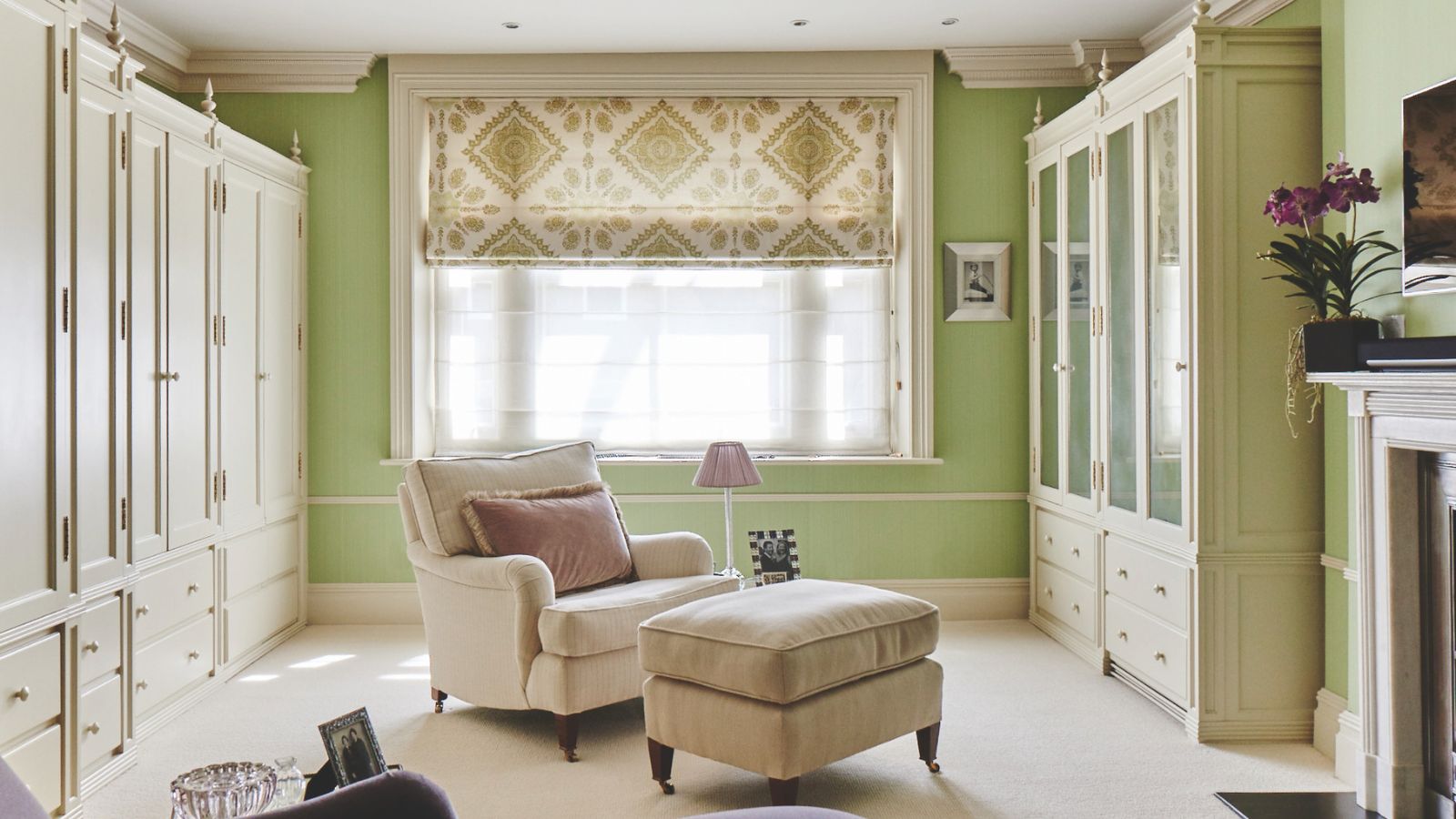

Sprucing up the paintwork in your home can be an exciting time, especially if you are renovating your dream home. However, it can also be an exhausting task if you are doing it yourself.
That’s why it always pays to follow expert painting hacks to help minimize clean-up; they can help you to minimize the workload and make this, quite frankly, messy task, that little bit easier.
Here, contractors and DIY experts have shared their top interior painting tips to minimize mess when painting for a smoother transition between DIY and decorating.
Painting hacks to minimize clean-up
It helps to put things in place when preparing walls for painting to make the clean-up process after painting a room easier. Planning ahead can save you time and energy in the long run.
1. Layer up drop cloths
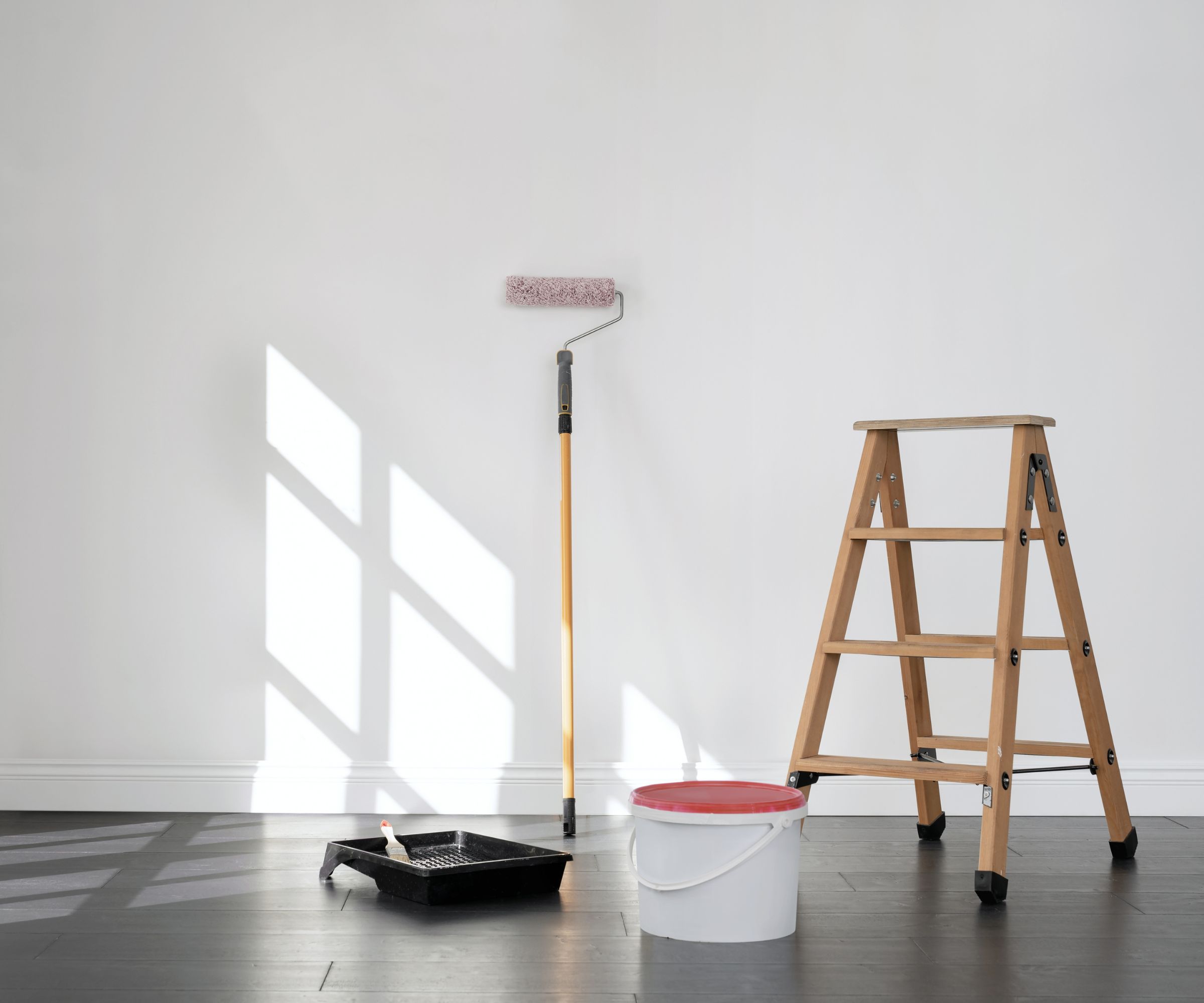
Prepping before you start painting will make cleaning up easier.
Drop cloths are one of the most essential tools for painting a house, helping to protect your floors from staining and reducing cleanup. Bar Zakheim, contractor and owner of Better Place Design & Build begins, ‘Drop cloths are cheap. There's no reason not to put them just about anywhere. I love to tape them over windows to protect the glass as well as the trim in one go.’
You can buy extra large drop cloths from Walmart for less than $30.
However, drop cloths can be awkward when painting baseboards as they get in the way and don't fully protect the flooring up close. To get around this, Brian Kemnitz, contractor and owner of Pearl Painters suggests, ‘Put brown paper down under your baseboards when you are putting in the new base. You can use playing cards to help ease the paper under the trim and avoid pinching the paper. No tape, no bleed – perfect!’
2. Use quality tools
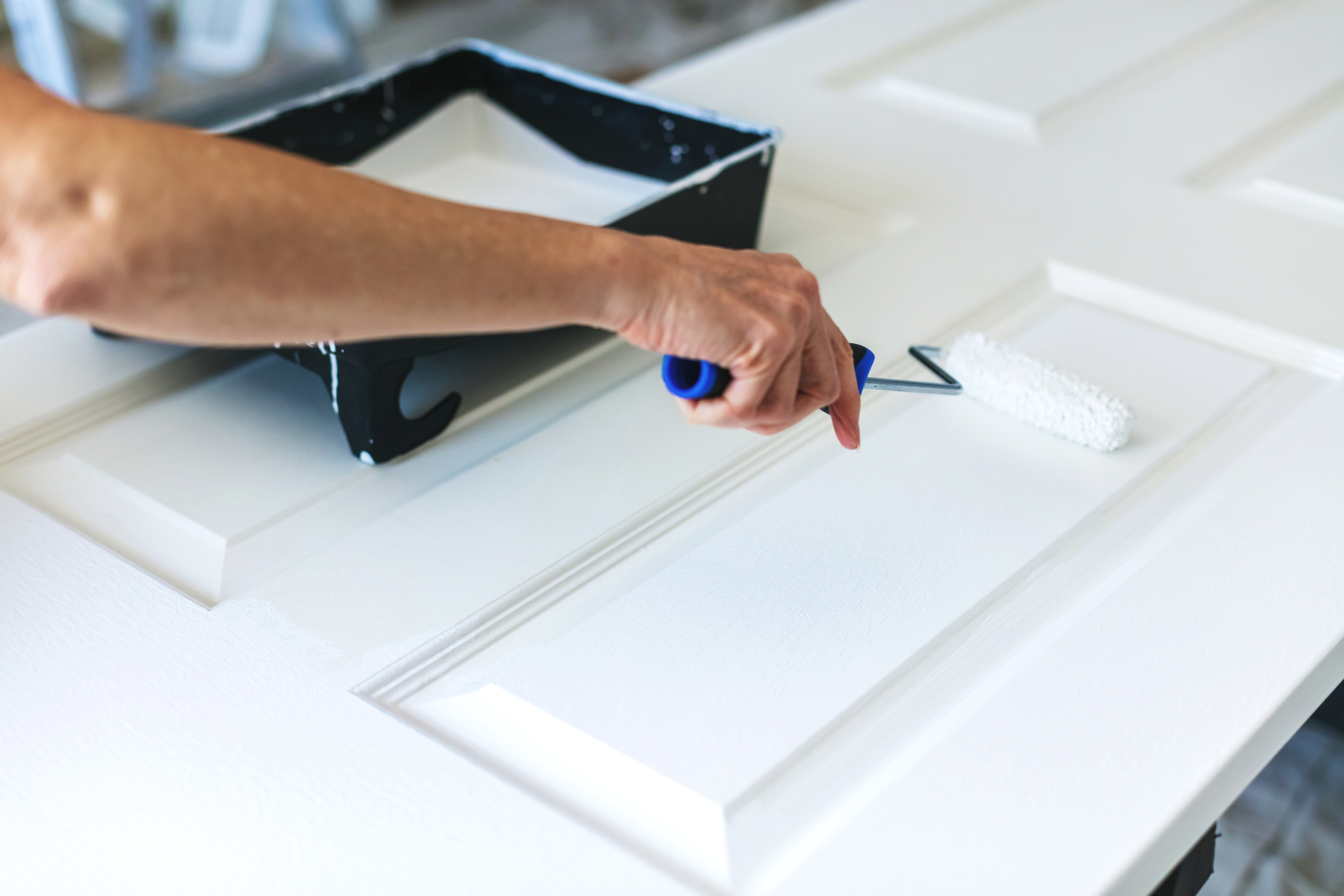
Using the right tools improves the finish while making clean up easier.
When shopping for DIY tools, you should always go for the most premium option you can afford Brian continues. He says, ‘Use a lambswool roller [availible at The Home Depot] – it is worth spending the extra. These higher quality tools mean there is less splatter on you and everything else, plus they hold more paint meaning fewer re-loads.
‘When tacking ceilings and painting with a roller, roll side to side, not overhead to keep paint off your face.’
3. Work in large, continuous sections

Completing as much as you can in one session reduces how often you need to clean up.
It is beneficial to try and complete as much as you can in one session (without rushing). This not only ensures you finish your home DIY projects but minimizes clean-up, too.
Bar points out, ‘Every time you stop, you need to clean up – so plan your work accordingly. Try to get whole sections done in a single day, whether that's a whole wall, a whole room, all of the trim, etc. This will mean less time on cleanup.’
If you do have to split up the work, don’t fret. Brian adds, ‘You can wrap your brushes and rollers in plastic while you have a break, so there is no need to clean while you pause painting. Then, you can bag your paint bucket, screen, and roller for storage for up to 10 days. Then, when you are ready to start again it's ready to go, no cleaning until you are done!’
Standard Reynolds Plastic Wrap, from Walmart, is ideal for this task.
4. Use disposable for small projects

For smaller or specialist tasks, disposable tools can make clean up quicker, but avoid doing this all the time to limit waste.
When tackling smaller jobs in a larger project, or finishing some quick weekend DIY home projects, it sometimes pays to use disposable tools. Jonathan Palley, CEO of Clever Tiny Homes suggests, ‘Use disposable brushes for small projects. Washing out, drying, and storing your paintbrushes takes a lot of time and effort. Sometimes, a simple sponge brush you can just throw away when you're done is a better option.’
5. Work one color at a time
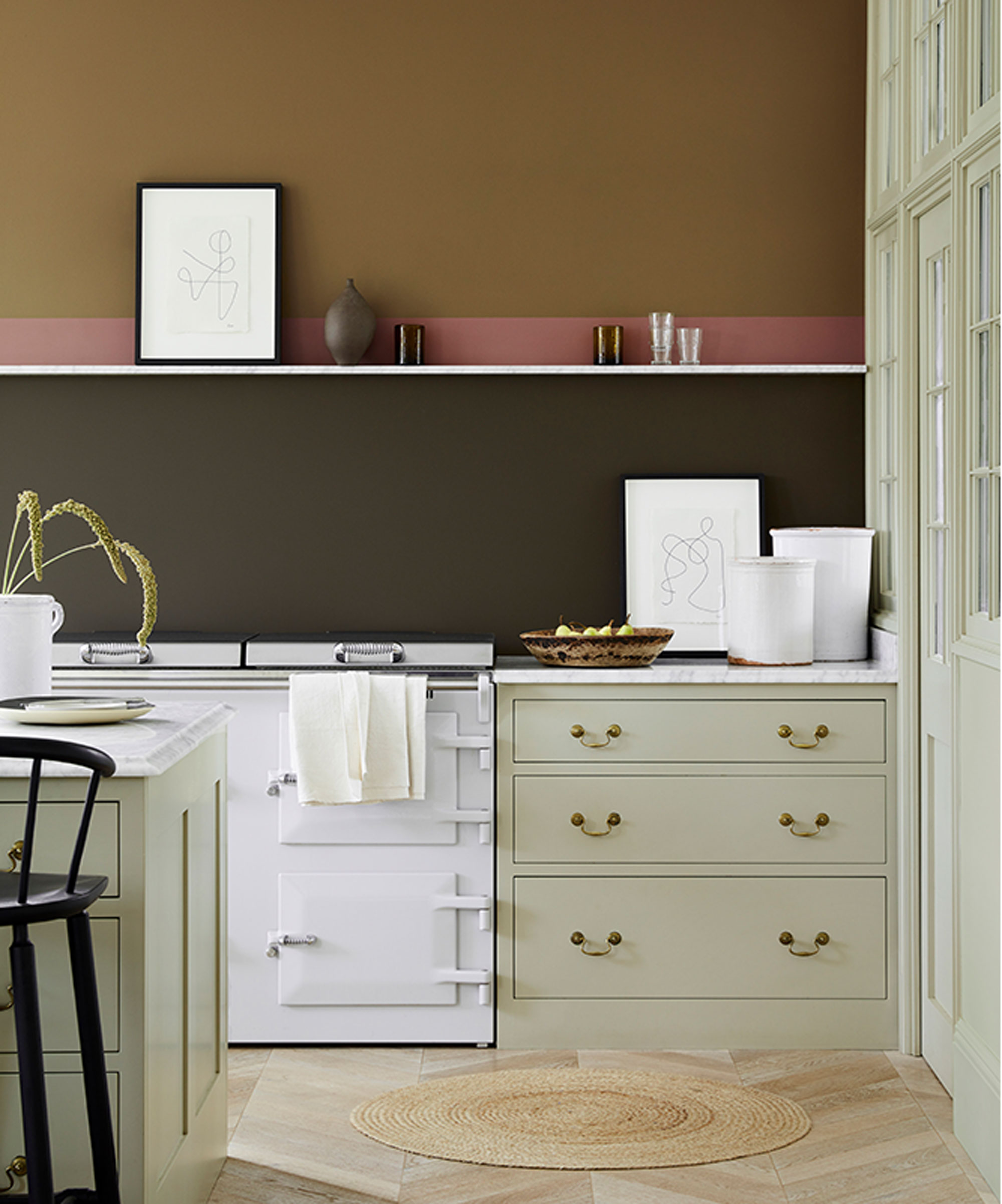
Completing all of one area before moving onto the next makes cleaning easier and the task less overwhelming.
When you have picked the right paint for a job, work one color and finish at a time to minimize mess. This reduces how many rollers and trays you have out at a time, making your painting area easier to navigate, less overwhelming, and easier to clean.
Alternatively, Jonathan suggests using a few colors full stop. ‘Every time you add another color to the mix, you've got one more can, one more tray, and at least one more brush to keep track of,’ he explains. ‘If you want to use multiple colors on a single job, handle one at a time.’
6. Use Liquid Mask
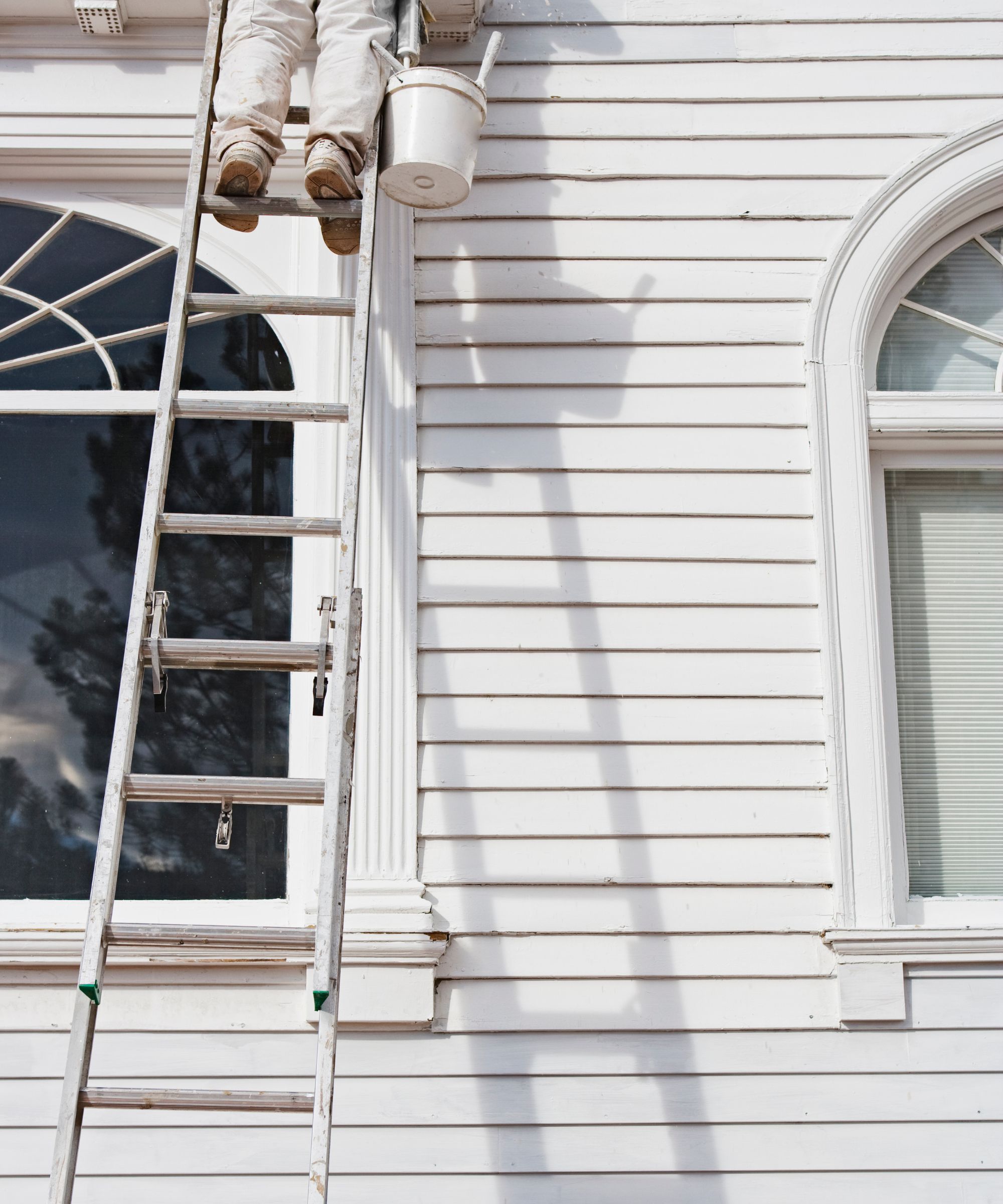
Using liquid mask makes painting around windows less stressful.
To avoid having to get paint off glass when working around windows, Brian recommends using a liquid mask, such as Jasco Mask and Peel, available at The Home Depot. This handy, paint-on product forms a tight seal over the glass once dry, allowing you to paint somewhat haphazardly and simply peel off the mess afterward. No more scrubbing and scraping and praying you don’t damage the surface beneath.
7. Soak brushes in vinegar
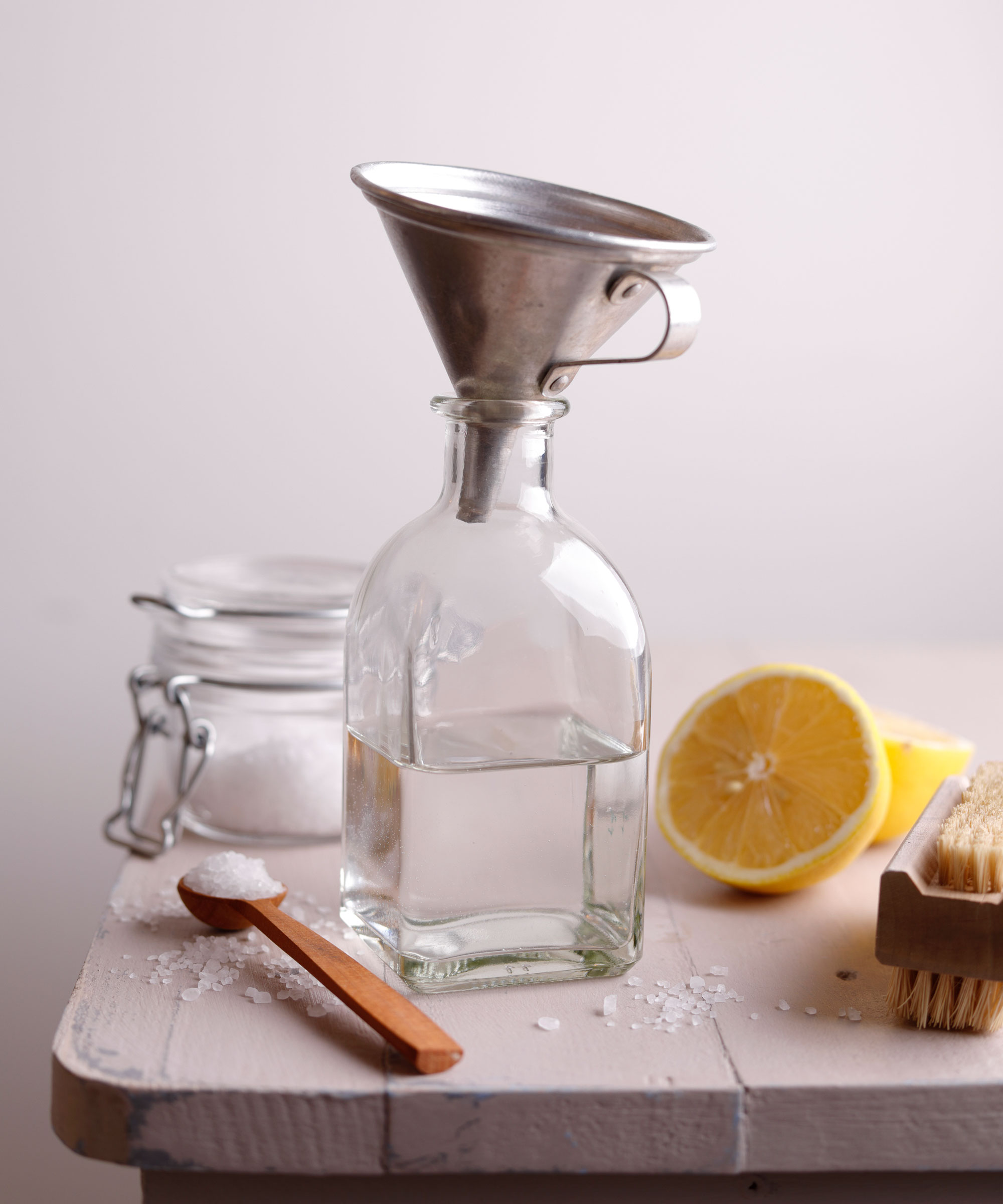
White vinegar will quickly break down water-based paints to refresh brushes, even if the paint has dried on.
Make cleaning paintbrushes easier and less toxic by cleaning with vinegar. When working with water-based interior paints, Andrew Cohn, DIY expert and founder of COHn Acrylics explains, ‘Soaking your brushes in plain white vinegar [available at Target] is the easiest way to clean the brushes after using them and will help keep them lasting longer for future paints.’
What to shop
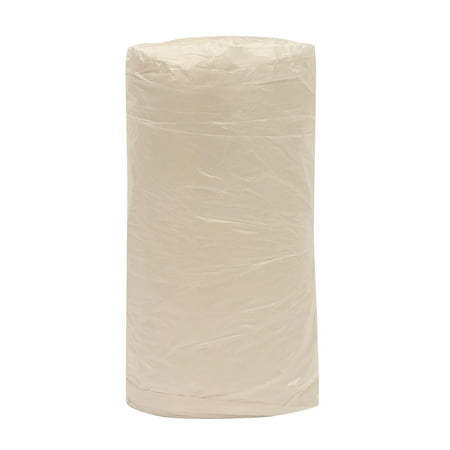
For more robust protection than a fabric drop cloth, consider plastic sheeting for your floors. They prevent paint seeping through to carpets or furniture should you spill a large amount.

cotch removable tape can stay on surfaces for up to 14 days, and it removes easily without leaving a sticky residue behind while creating sharp paint lines.
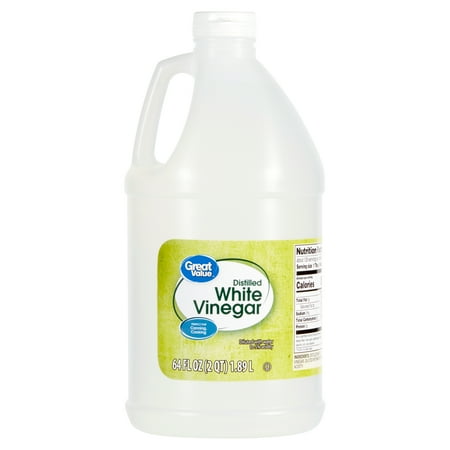
White vinegar breaks down water-based paint to help refresh brushes. Pair with baking soda when cleaning brushes with dried paint for extra fizzing power.
Meet the experts

Brian Kemnitz, owner of Pearl Painters since 2001, thrives on helping the team achieve their goals and ensuring client satisfaction.

Jonathan is the founder of Clever Tiny Homes. The company allows him to combine his passions for carpentry and engineering world-class products.
Once you have finished painting and you start clearing things away, it is important to research how to dispose of paint safely in your local area, as leftover paint and empty paint cans are two items you should never throw in the trash to avoid contaminating the environment.
Sign up to the Homes & Gardens newsletter
Design expertise in your inbox – from inspiring decorating ideas and beautiful celebrity homes to practical gardening advice and shopping round-ups.

Chiana has been at Homes & Gardens for two years and is our resident 'queen' of non-toxic living. She spends most of her time producing content for the Solved section of the website, helping readers get the most out of their homes through clever decluttering, cleaning, and tidying tips. She was named one of Fixr's top home improvement journalists in 2024.
You must confirm your public display name before commenting
Please logout and then login again, you will then be prompted to enter your display name.
-
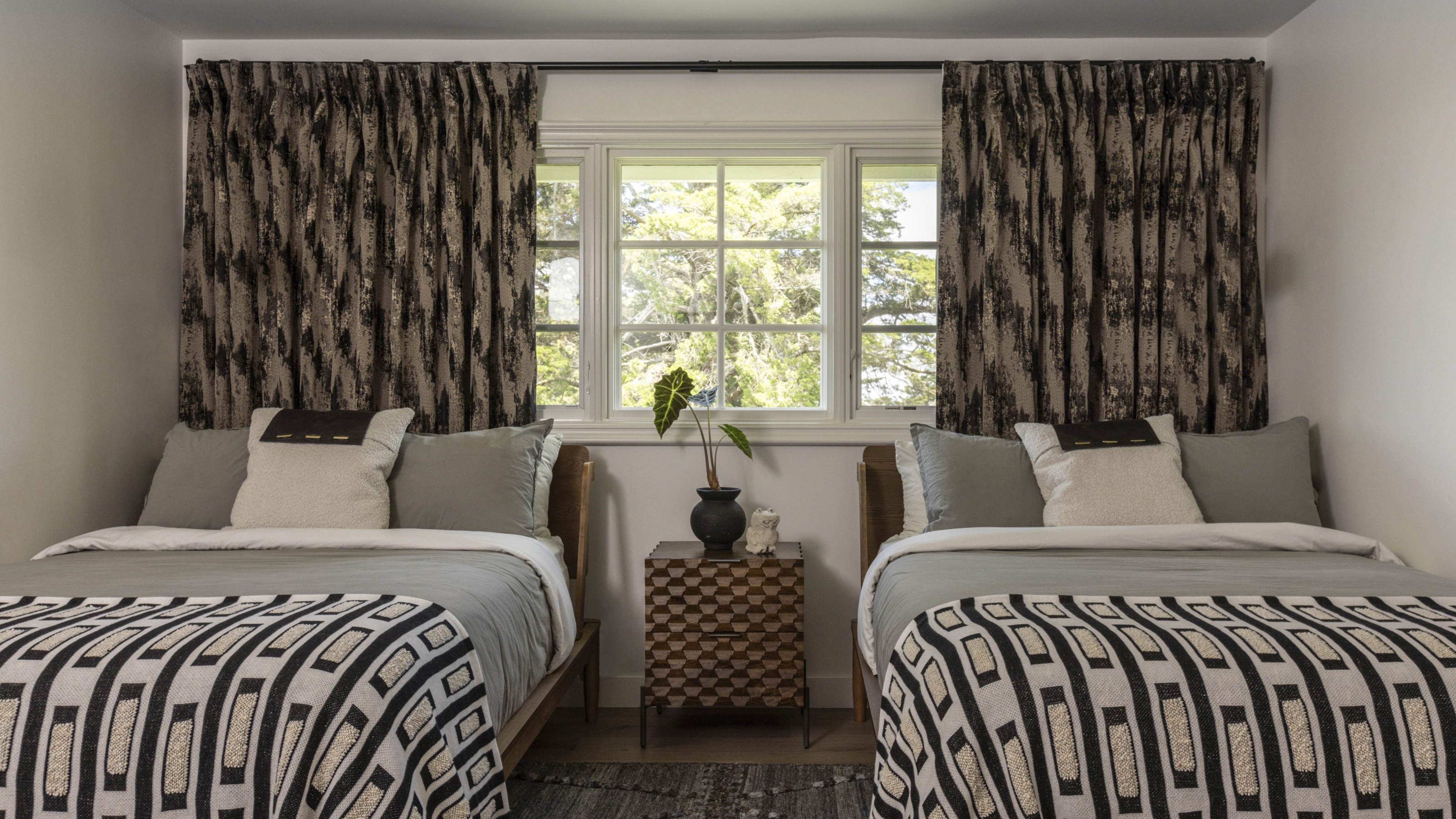 The biggest curtain trends to follow in 2025 – 8 key looks to shop that will instantly elevate your rooms
The biggest curtain trends to follow in 2025 – 8 key looks to shop that will instantly elevate your roomsThese are the colors, styles, and materials to embrace in your windows this year if you want desirable drapes, plus our favorite places to shop the trends
By Lilith Hudson
-
 Reese Witherspoon upgraded a small corner into a cozy reading nook – designers say you can replicate her 'ultimate little escape' (from $18)
Reese Witherspoon upgraded a small corner into a cozy reading nook – designers say you can replicate her 'ultimate little escape' (from $18)'It’s all about comfort, calm, and just the right amount of cozy': You only need three things to follow Reese's example – and it's not only for book lovers
By Megan Slack
-
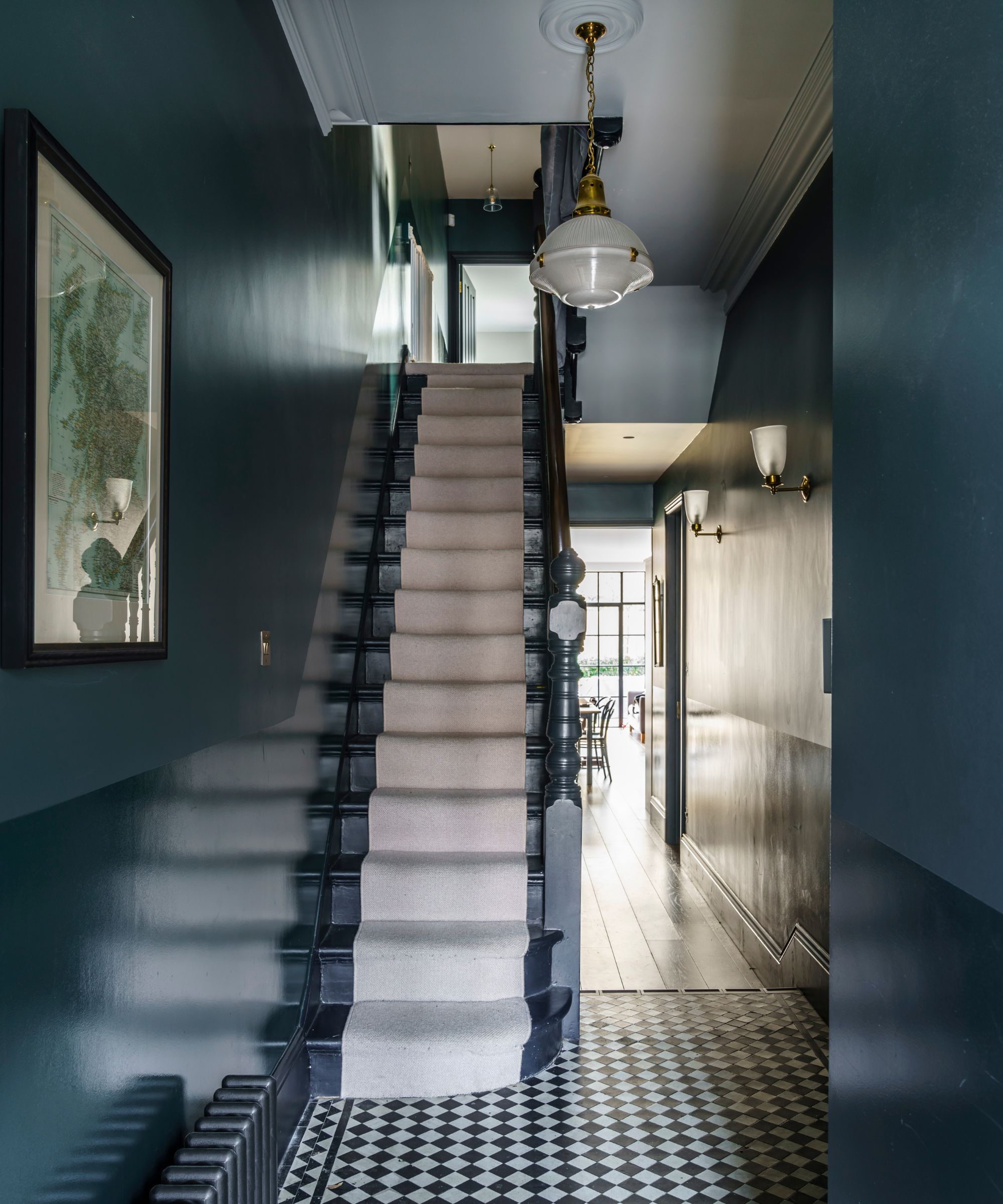 5 beautiful and impactful home improvement projects you can DIY this weekend for under $200 – you don't have to spend big to make a statement
5 beautiful and impactful home improvement projects you can DIY this weekend for under $200 – you don't have to spend big to make a statementFrom painting your fireplace to redecorating your door, little changes can transform and refresh your space
By Ottilie Blackhall
-
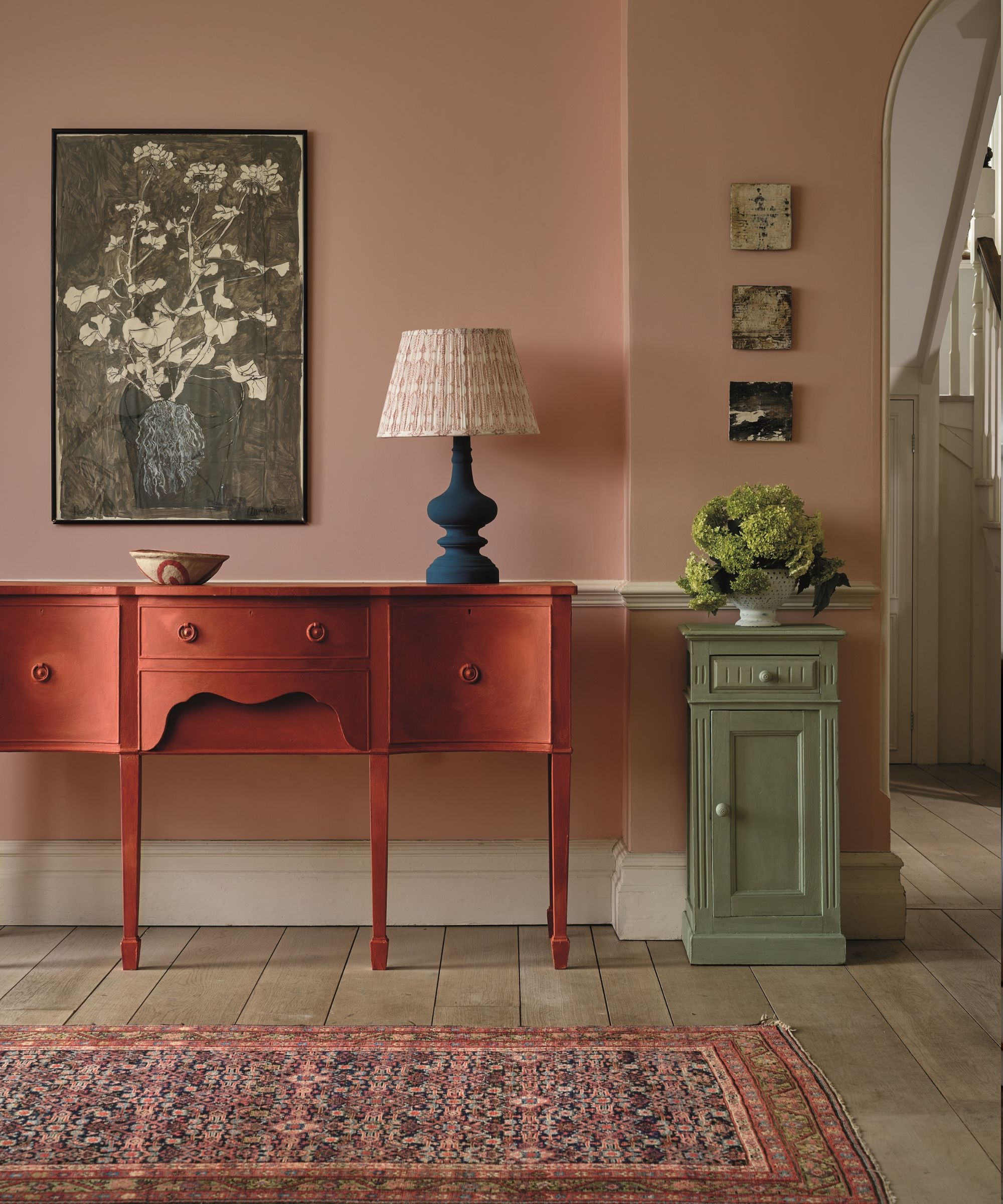 How to paint over stained wood – 6 simple steps expert painters swear by for even, lasting finishes
How to paint over stained wood – 6 simple steps expert painters swear by for even, lasting finishesSkipping even one step will result in chipping paint, experts warn
By Natasha Brinsmead
-
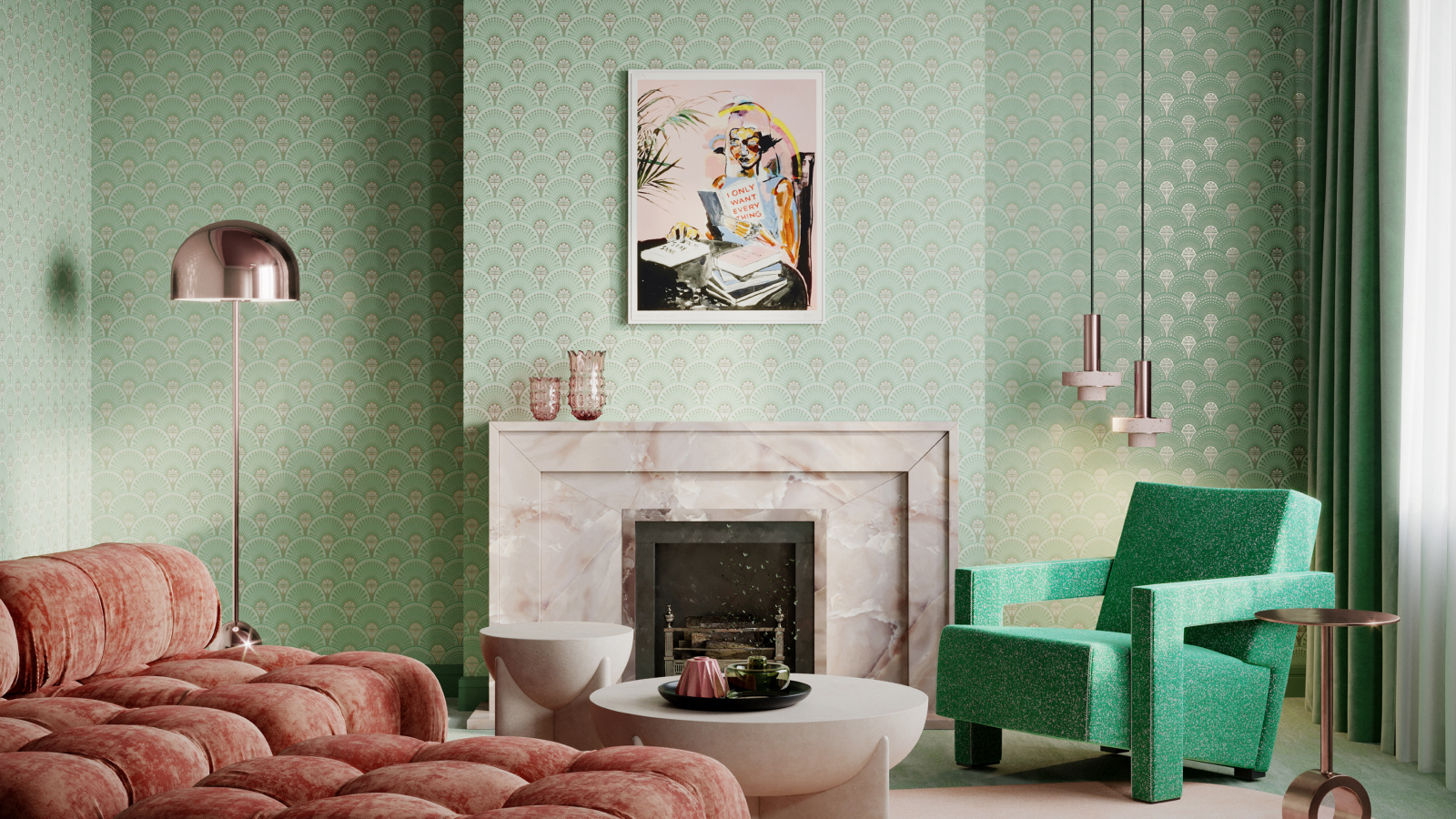 Can you put wallpaper on textured walls? Experts reveal it is indeed possible with this vital step
Can you put wallpaper on textured walls? Experts reveal it is indeed possible with this vital stepPrep, prep and prep some more for wallpapering success
By Sophie Warren-Smith
-
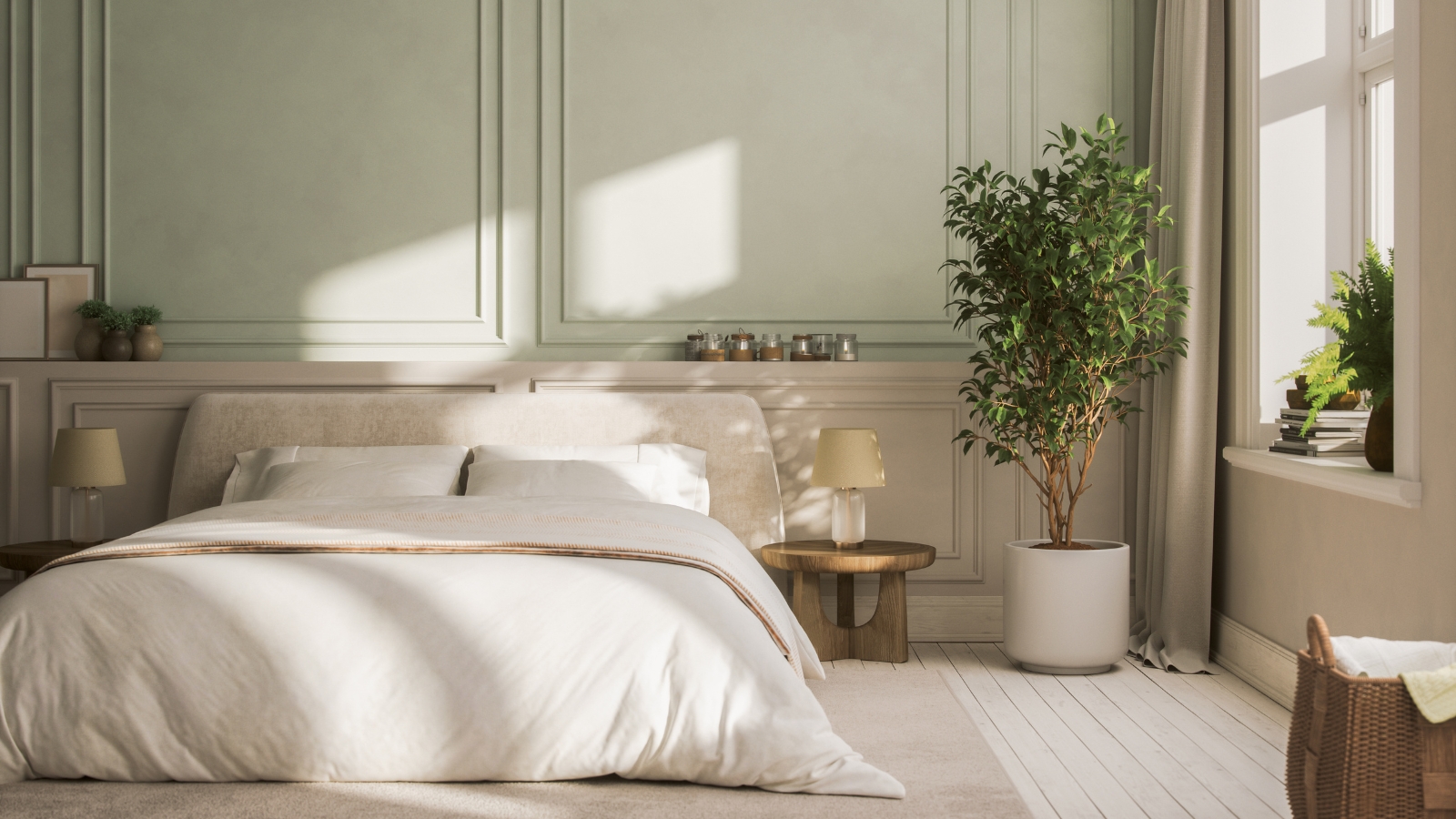 8 helpful ways to re-purpose old pillows – from making handy garden kneelers and draft excluders, to cozy pet beds
8 helpful ways to re-purpose old pillows – from making handy garden kneelers and draft excluders, to cozy pet bedsSustainability experts say these bulky items don't have to go to waste
By Sophie Warren-Smith
-
 7 practical things you can do with leftover paint around your home including protecting outdoor furniture, tinting cement and creating touch-up kits
7 practical things you can do with leftover paint around your home including protecting outdoor furniture, tinting cement and creating touch-up kitsPro tips to make the most of those extra supplies
By Andy van Terheyden
-
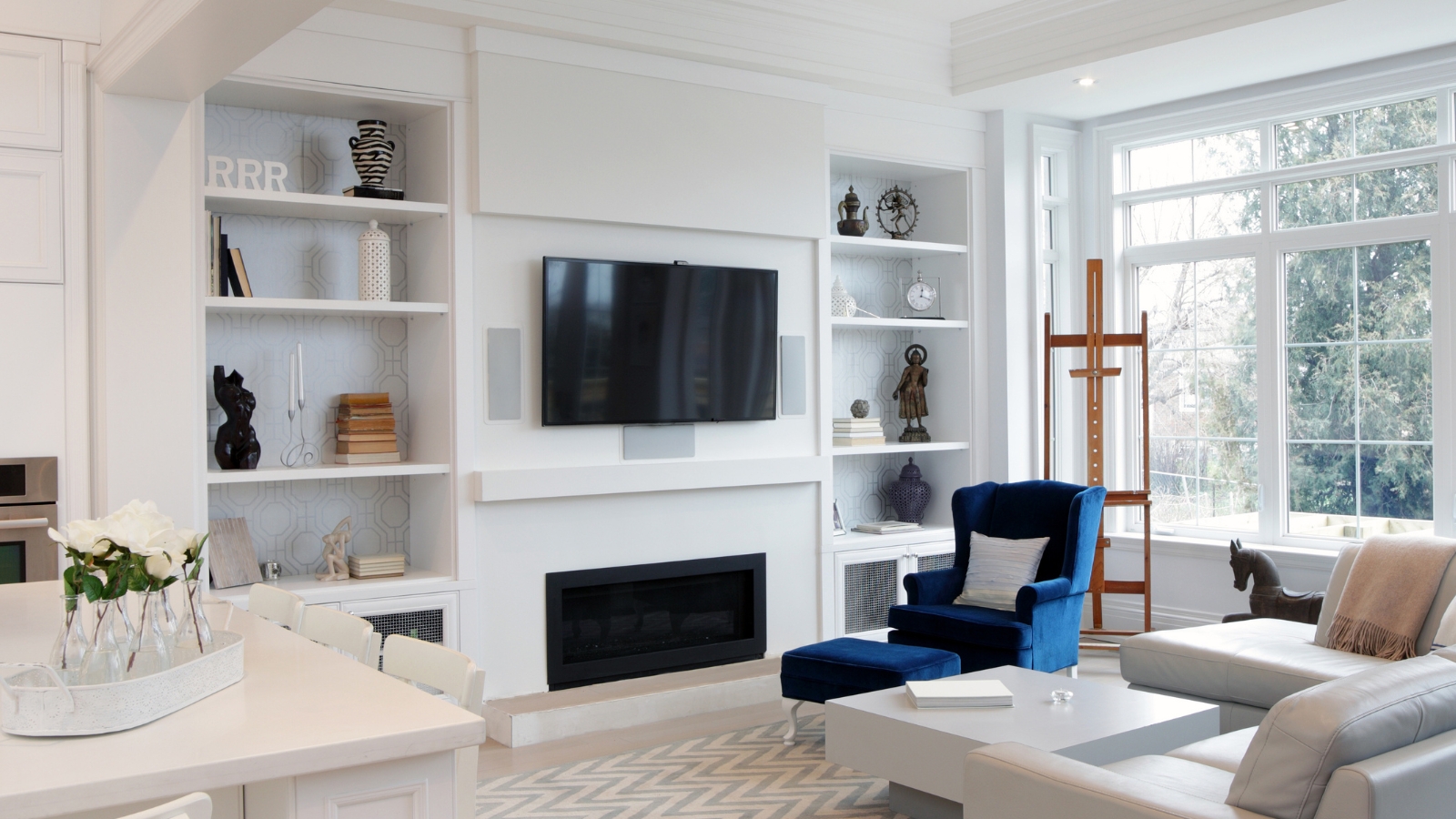 Construction pros reveal the 6 mistakes to avoid when hanging drywall for perfect walls and ceilings
Construction pros reveal the 6 mistakes to avoid when hanging drywall for perfect walls and ceilingsThey see these all the time
By Natasha Brinsmead
-
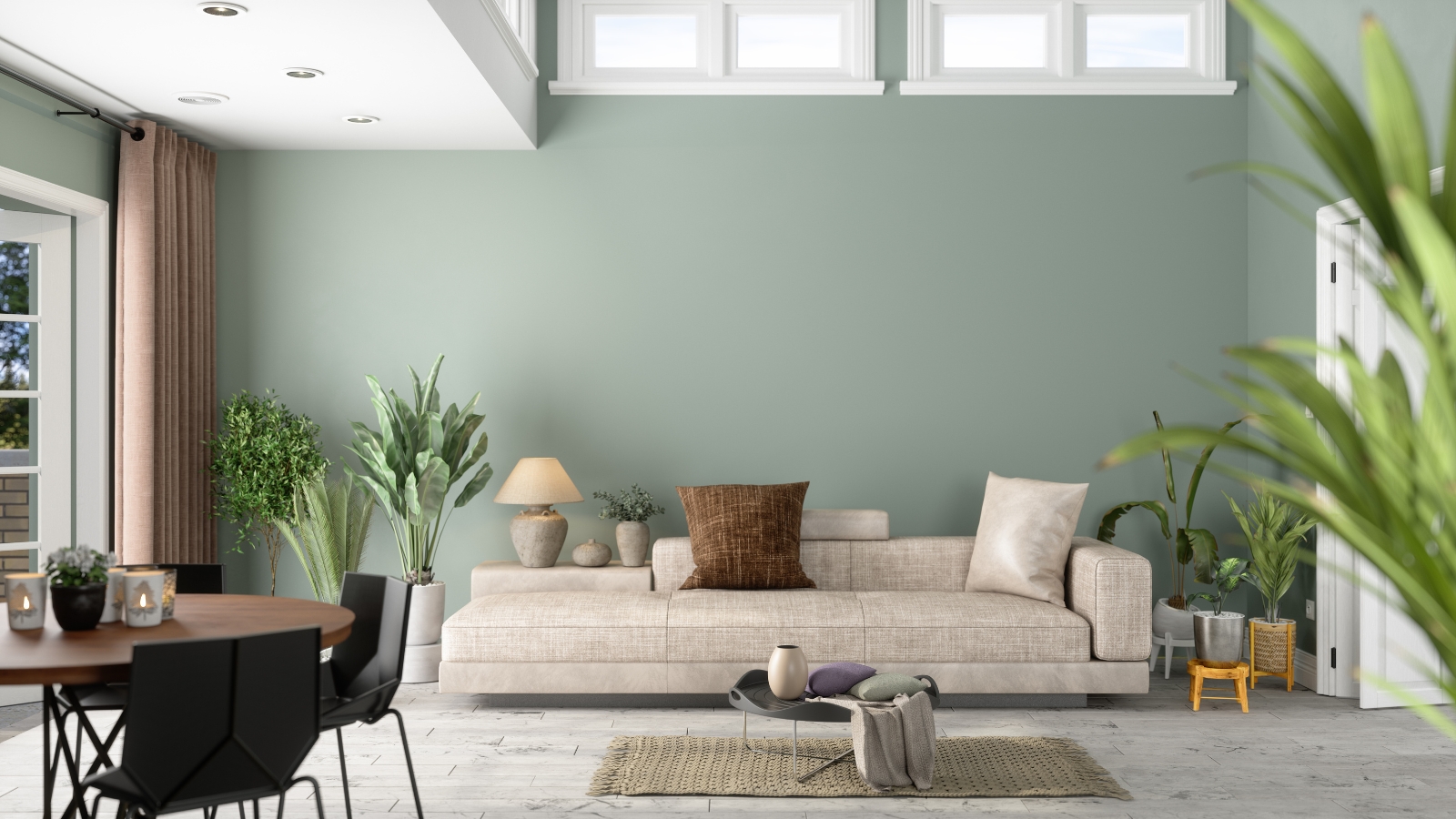 Why is my wall paint bubbling? Decorators reveal why it happens and how you can fix it
Why is my wall paint bubbling? Decorators reveal why it happens and how you can fix itBubbles look unsightly and might indicate a more serious problem
By Ottilie Blackhall
-
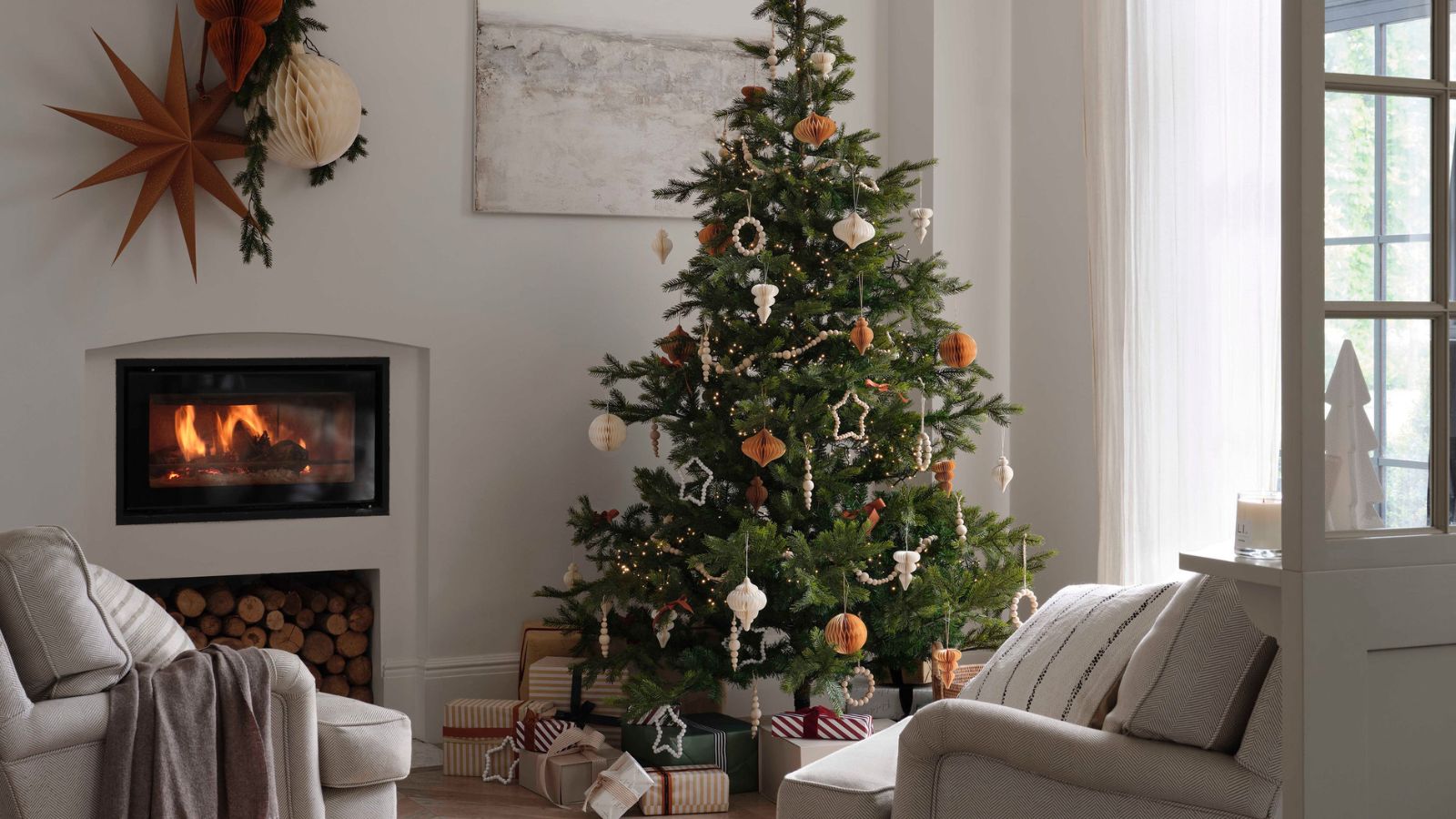 Christmas decorating stalled by missing tools and essentials? These 6 festive DIY job must-haves will get your delayed tasks back on track
Christmas decorating stalled by missing tools and essentials? These 6 festive DIY job must-haves will get your delayed tasks back on trackGet your holiday decorating going again with our Christmas first-aid kit
By Chiana Dickson